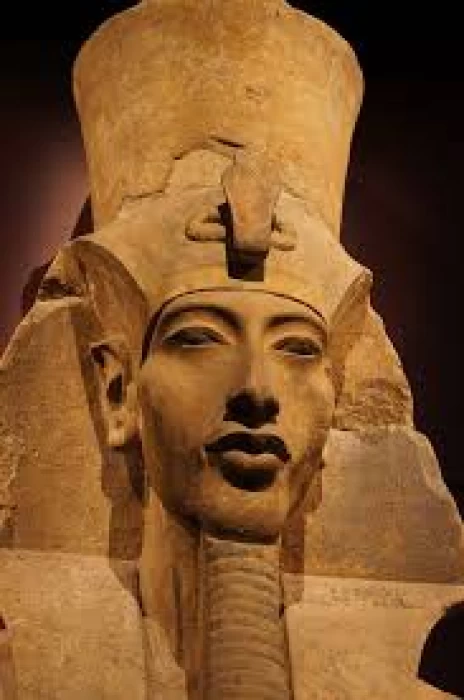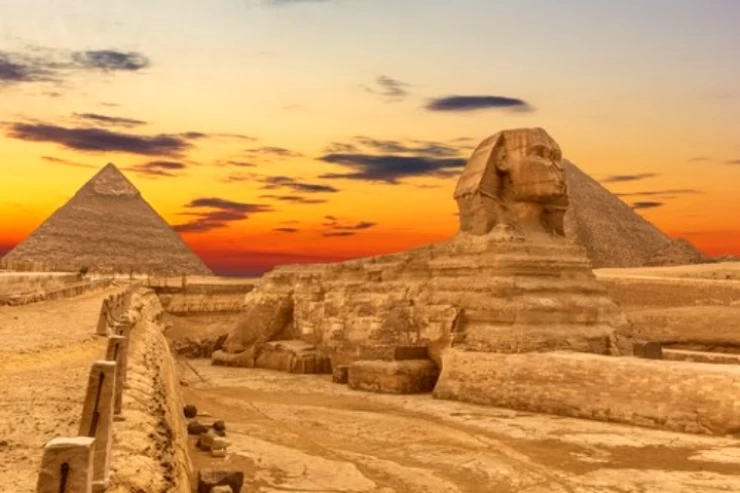
King Akhenaten | Amenhotep IV | Monotheism in Ancient Egypt
King Akhenaten
Pharaoh Akhenaten, who ruled the New Kingdom of Egypt during the 18th Dynasty, ruled from 1353 to 1336 BCE. His other names, which all translate to "successful for" or "of great use to" the god Aten, are "Akhnaton," "Akhenatenaton," "Ecnaton," or "Ijnaton."
This is, accordingly, an attempt to establish a monotheistic religion; the tombs of Amarna were particularly moved to the eastern bank of the Nile but facing west.
The Akhenaten attempt ended early. After his death, he ascended to the throne as the young Tutankhamen, who reopened the temples of Amun for worship, brought the capital to Thebes, and changed his name to Tutankhamen instead of the name given by his father, Akhenaten, which was Tutankhaten.
Akhenaten, the first known monotheist, initiated a significant theological, political, and religious revolution lasting 17 years, impacting history throughout his reign.
The Aten Revolution
Of all his reforms, perhaps the most marked was that of elevating Aten, the sun disk, into the place of chief deity. In the first years of his reign, he gradually brought about the transition away from traditional polytheism, which honored the gods Amun, Osiris, and Ra, toward the exclusive worship of Aten. In the fifth year of rule, he reconfirmed his name, adding to it a new one: Akhenaten, which means "Effective for Aten," in honor of his new deity.
Also, Akhenaten changed the capital city from Thebes to a new city he made called Akhetaten (the modern-day Amarna). This city was built with the intention that it would be the center of worship of Aten and the administrative point for the whole of Egypt. This act was the most audacious he did because it was a total cut-off from the very many centuries-old influence of the powerful priestly office of Amun over society in general.
King Amenhotep IV, Amarna City
Amenhotep IV (1372-1354 B.C.), son of Amenhotep III and husband of Nefertiti. Akhenaten is a unique figure in Egyptian history; he ended the millennial religious order by introducing monotheism. Sovereign of the 18th dynasty of the New Kingdom, he assumed the name of the god Aton, that is, the Sun god, with whom he identified himself. After forcing the cult of this divinity, the pharaoh moved the capital from Thebes to Akhetaten, which is the current Tell El-Amarna city in El Menya, which became the center of the new cult and fought against the powerful priests who tried to keep alive the cult of the god Amun.
However, this new culture's flourishing ended with King Akhenaten's death. Tutankhamun, who ascended the throne a few years after Akhenaten's death, brought the capital back to Thebes and restored the cult of Amun once again.
The group of his family statues exhibited inside the Egyptian Museum in Cairo is the greatest example of how art in ancient Egypt had been changed during the Amarna period.
Pharaoh Akhenaten, who ruled the New Kingdom of Egypt during the 18th Dynasty, ruled from 1353 to 1336 BCE. His other names, which all translate to "successful for" or "of great use to" the god Aten, are "Akhnaton," "Akhenatenaton," "Ecnaton," or "Ijnaton."
The Akhenaten attempt ended early. After his death, he ascended to the throne as the young Tutankhamen, who reopened the temples of Amun for worship, brought the capital to Thebes, and changed his name to Tutankhamen instead of the name given by his father, Akhenaten, which was Tutankhaten.
Akhenaten, the first known monotheist, initiated a significant theological, political, and religious revolution lasting 17 years, impacting history throughout his reign.
Of all his reforms, perhaps the most marked was that of elevating Aten, the sun disk, into the place of chief deity. In the first years of his reign, he gradually brought about the transition away from traditional polytheism, which honored the gods Amun, Osiris, and Ra, toward the exclusive worship of Aten. In the fifth year of rule, he reconfirmed his name, adding to it a new one: Akhenaten, which means "Effective for Aten," in honor of his new deity.
Also, Akhenaten changed the capital city from Thebes to a new city he made called Akhetaten (the modern-day Amarna). This city was built with the intention that it would be the center of worship of Aten and the administrative point for the whole of Egypt. This act was the most audacious he did because it was a total cut-off from the very many centuries-old influence of the powerful priestly office of Amun over society in general.









-webp.webp)








